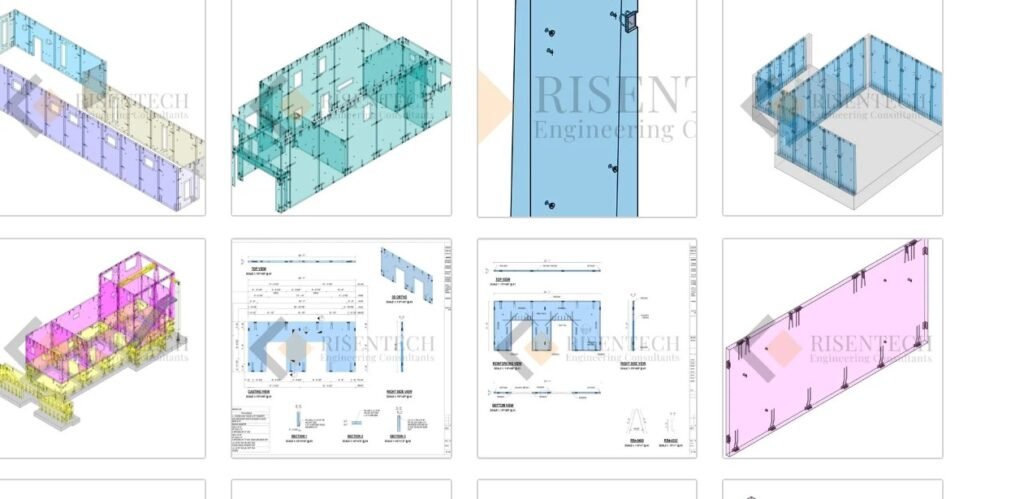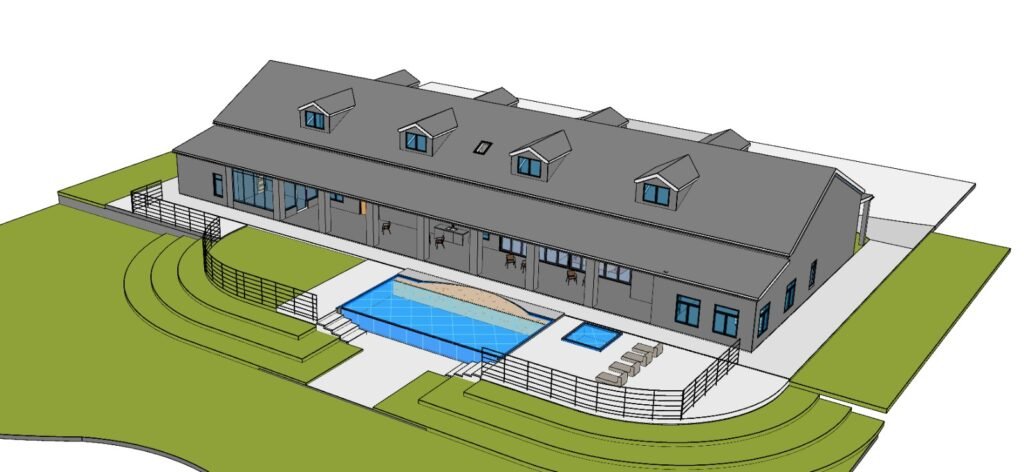In today’s competitive construction landscape, embracing innovative technologies is no longer optional. Structural BIM is rapidly becoming the industry standard, offering a holistic approach to design, construction, and building lifecycle management.
This comprehensive guide dives deep into the power of Structural BIM, exploring its benefits, applications, and how it can revolutionize your construction projects.
The Rise of Structural BIM: A Data-Driven Revolution
Traditional 2D drawings have long been the cornerstone of construction planning. However, they present limitations: siloed information, communication gaps, and difficulty visualizing complex designs.
Structural BIM shatters these limitations. It creates a centralized intelligent 3D model that integrates all structural data – geometry, materials, properties – into a single source of truth. This model acts as a collaborative platform for architects, engineers, contractors, and owners to work together seamlessly throughout the project lifecycle.
The global BIM market is projected to reach a staggering USD 14.3 billion by 2025 (Grand View Research) This exponential growth reflects the increasing recognition of BIM’s transformative potential.
Unlocking the Power of Structural BIM: Key Benefits
Structural BIM offers a multitude of advantages over traditional methods, impacting every stage of your project. Here’s a closer look at some of the most significant benefits:
- Enhanced Collaboration and Communication: With a single, centralized model, all stakeholders have access to the same up-to-date information. This fosters real-time communication, reduces errors due to miscommunication, and facilitates better decision-making.
- Clash Detection and Resolution: Structural BIM software can automatically identify potential clashes between structural elements, such as beams colliding with ducts. Addressing these clashes virtually eliminates costly rework and delays during construction. Studies by Autodesk show that BIM can reduce rework by up to 30%.
- Improved Design Efficiency and Optimization: Structural BIM allows for rapid exploration of design alternatives. Engineers can virtually test different configurations, analyze their performance, and optimize designs for strength, weight, and material usage.
- Accurate Cost Estimating and Material Takeoffs: BIM models contain detailed information about all structural components. This enables software to automatically generate accurate quantities of materials needed, leading to more precise cost estimation and budget control. According to a McGraw-Hill Construction report, BIM can improve cost estimating accuracy by up to 20%.
- Streamlined Construction Sequencing and Scheduling: By visualizing the construction process in 3D, BIM facilitates the creation of more efficient construction sequencing plans. This translates to better scheduling, reduced waste on-site, and improved project delivery times.
- Enhanced Building Performance Analysis: Structural BIM software can be integrated with analysis tools to simulate the performance of a building under various loads and environmental conditions. This allows engineers to optimize designs for energy efficiency, structural integrity, and sustainability.
- Facility Management and Maintenance: Structural BIM models serve as a valuable resource throughout a building’s life cycle. Facility managers can access detailed information about building components for maintenance planning, renovation projects, and space utilization analysis.
Getting Started with Structural BIM: A Roadmap to Success
While the benefits of Structural BIM are undeniable, implementing it requires careful planning and the right tools. Here’s a roadmap to guide you on your journey:
1. Define Your BIM Goals and Strategy:
- Identify project types: Determine which projects will benefit most from Structural BIM implementation.
- Set clear objectives: Define what you want to achieve with BIM – improved collaboration, clash detection, or enhanced design optimization.
- Develop a BIM execution plan: Outline the workflows, software selection, and training needs for your team.
2. Invest in the Right BIM Software:
There are several leading Structural BIM software options available, each with its own strengths and functionalities. Here are some popular choices:
- Revit (Autodesk): A versatile and widely used BIM platform with robust structural modeling capabilities.
- Tekla Structures (Trimble): Specializes in structural BIM, offering advanced tools for modeling steel, concrete, and wood structures.
- Staad.Pro (Bentley Systems): A powerful structural analysis and design software that integrates with BIM workflows.
3. Embrace a Culture of Collaboration:
Structural BIM thrives on teamwork. Invest in training your team members in BIM workflows and software usage. Encourage communication and collaboration with all project stakeholders – architects, engineers, contractors, and owners.
4. Consider Integration with Other Construction Technologies:
Structural BIM can be further enhanced by integrating it with other digital tools:
- Virtual Design and Construction (VDC): Creates a collaborative environment for simulating and optimizing the entire construction process.
- 3D Printing: BIM models can be used to generate 3D-printed prototypes for design validation and better communication with stakeholders.
The Future of Construction is BIM-driven
Structural BIM represents a fundamental shift in the construction industry. By embracing this technology, you can gain a significant competitive advantage. Here’s a glimpse into the future of BIM:
- Cloud-based BIM: Cloud collaboration platforms will allow real-time access to BIM models from anywhere, further enhancing project collaboration.
- Open BIM Standards: Increased adoption of open BIM standards like IFC (Industry Foundation Classes) will facilitate seamless data exchange between different software programs.
- Integration with AI and Machine Learning: AI-powered tools will leverage BIM data for automated design analysis, code compliance checking, and even construction site optimization.
Conclusion: Building a Brighter Future with Structural BIM
Structural BIM is not just a software – it’s a methodology that transforms how we design, build, and manage structures. By embracing BIM, you can unlock a future of efficient construction, optimized designs, and improved project outcomes. Take the first step towards a brighter future – explore Structural BIM and discover its transformative power for your construction projects.




